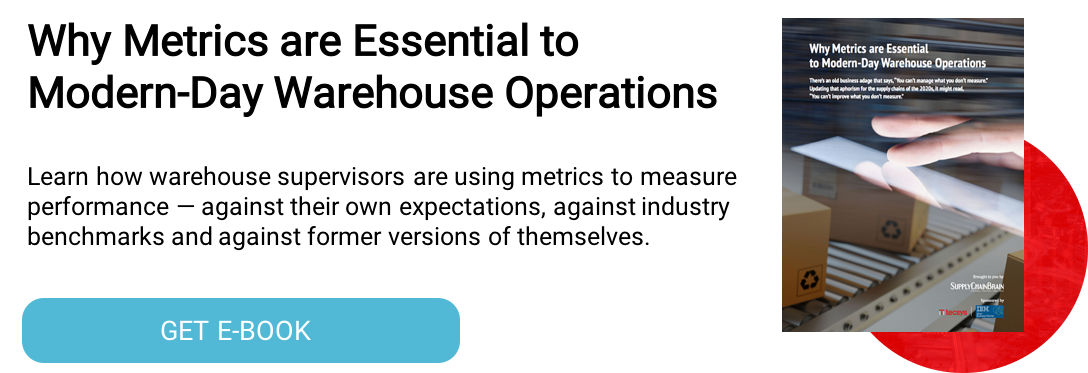The Benefits and Challenges of an IoT-enabled Supply Chain

For the last couple of years, the Internet of Things (IoT) has started to really take off in supply chain — especially for regulated items such as pharmaceuticals, wine and spirits, chemicals and other similar products. These complex and tightly managed supply chains will be an interesting showcase for the future of IoT in other industries.
If we have learned anything in the past 18 months, it’s that the supply chain must invest and adopt new technologies to meet the needs of an increasingly digital world. According to Gartner, at least 50% of large global companies will be using AI, advanced analytics and IoT in supply chain operations by 2023.
There is no doubt that adopting these types of technologies creates notable advantages to your warehouse management operations and is critical for supply chain resiliency. However, even the most innovative technology products are far from perfect.
Let’s examine some of the benefits and challenges Tecsys is seeing in the IoT-enabled supply chain.
3 Benefits of an IoT-enabled Supply Chain
1. Obtain Visibility of Products
Understanding where inventory is located has only increased in importance. This is the key benefit to having an IoT-enabled supply chain. It’s the ability to know exactly where everything is at all times. This gives you a clear picture of the real performance of your supply chain and highlights the choke points, slowdowns and problem areas in your network. When you have this level of information, you can get ahead of problems and manage issues proactively.
2. Monitor Storage Conditions
With an IoT-enabled supply chain comes the ability to not only track location data, but also things like the storage altitude, pressure, temperature, record physical impacts or tilts. This is especially important when managing regulated goods. You can access key metrics to ensure the transport and storage of the goods meets the specifications of the product and the items arrive to the customer in perfect condition.
3. Estimate Time of Arrival
Highlighting the arrival time of products in the supply chain allows for effective staffing, storage requirements and managing potential issues if there are delays. The IoT and other smart technologies create a smoother and more predictable supply chain. In turn, this translates into efficiency improvements and a strengthened relationship with your customers.
3 Challenges of an IoT-enabled Supply Chain
1. Data Overload
Many IoT-enabled supply chain networks capture massive amounts of data … so much so that just handling it can be overwhelming. Sifting through it at a granular level creates data overload and is usually impractical. Advanced analytical tools are needed to manage the data and highlight valuable information. Otherwise, you’re just going to be drowning in data and unable to gain insight into your supply and demand trends.
2. Network Gaps
The systems to track IoT are not pervasive yet — geography, internet connectivity, skills or user training can all derail an IoT network. Most supply chains are international and it’s not safe to assume what’s available and how things work in your home geography will work everywhere your goods travel. Those holes in the network can create a lot of problems when the rest of your systems are relying on consistent flows of data throughout the supply chain.
3. Security Management
With a large and diverse supply chain that is recording activity of the goods and assets in motion, securing the resulting data is critical and often a real challenge. Therefore, a viable data security plan is essential. Technologies must be in place from day one to ensure the critical data in your network is not at the potential for compromise.
Understand and Predict Your Supply Chain
An IoT-enabled supply chain is not a panacea, but there has never been a better time to embrace the potential of new technologies. When it’s done right, it can really help you achieve transparency and effective supply chain planning. But, step carefully since it can also become a supply chain challenge. Identify the best opportunities for applications and start with valid data to ensure your success.




